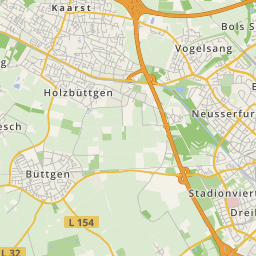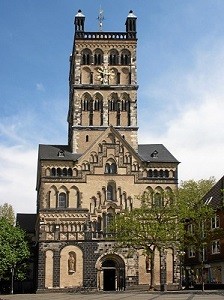











The Quirinus-Minster is one of the most important late-Romanesque churches along the Lower Rhine. It was built between 1209 and 1230 and in 2009 raised to the status of a Basilica minor by Pope Benedikt XVI.

The Quirinus-Minster is seen as an outstanding example of sacral architecture in the transition period from the Romanesque to Gothic in Germany. The construction started on the 9th of October 1209.
The outside of the Quirinus-Minster is characterised by the colour contrast between light tuff and black basalt. Both stone types came from the nearby Eifel and were transported on the Rhine to Neuss by ship.
The facade and the westwerk of the minster have been richly decorated: pilaster strips, large arcatures and arched mouldings are usually common in the Romanesque but can't be found nowhere to a similar extent.
The original plan included two towers, as the partitioning in the lower part of the facade can be seen. Decorations in the middle part provide the transition to the simple central tower. The new Gothic style has influenced the Neuss building already: one recognises some pointed arches at the minster tower.
The tower with a height of nearly 100 metres is the highest in the Rhineland, but was by more than 30 metres reduced by a fire after a lightning strike in the year 1741. At the same time, the crossing tower got a Baroque hood with a Quirinus-statue as a crown.